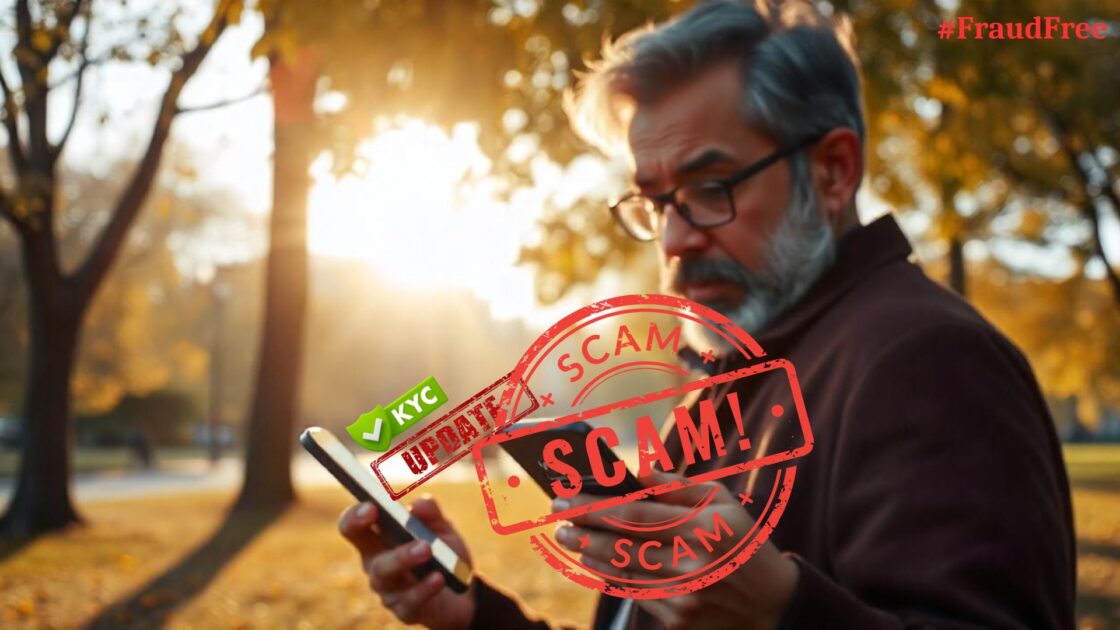The crypto world promises high returns, independence, and innovation. But behind this booming trend lies a darker side: the rise of fake crypto exchanges, contributing to the growing problem of Crypto scams in India.
Thousands of Indians have fallen for slick-looking websites and apps that pretend to be legit trading platforms. They deposit money, see fake profits on their dashboard, and one day, the website vanishes.
If you’ve been tempted to “try” a new exchange or seen ads offering guaranteed daily returns, read this before you click.
What Is a Fake Crypto Exchange?
A fake crypto exchange is a fraudulent website or app that mimics real trading platforms like Binance, CoinDCX, or WazirX — but is built solely to steal your money.
These sites often look professional: live charts, fake testimonials, and a working customer dashboard. But under the hood, there’s no actual trading. The only “real” thing is the money you deposit — which you’ll never get back.
Many even clone official domains, changing a single letter — like Binancee.com or Wazirxpro.net — to trick users into trusting them.
How Fake Crypto Exchange Scams Work?
Fake crypto exchanges are carefully designed traps. Scammers combine clever tech, psychological tricks, and greed to steal your money. Here’s how Crypto scams work:
- Creating a Convincing Platform
Scammers build websites or apps that look almost identical to real exchanges, copying logos, trading dashboards, and testimonials. - Luring Investors
They advertise on social media, Telegram, WhatsApp, or even through fake influencer endorsements. Promises of guaranteed profits or “no-risk trading” entice people to register and deposit funds. - Displaying Fake Profits
Once you deposit, your account balance appears to grow. Small withdrawals may work at first to build trust. These fake gains encourage you to deposit more, thinking the returns are real. - Blocking Withdrawals and Asking for Fees
When you try to withdraw larger amounts, the platform suddenly introduces verification, tax, or processing fees. Paying these doesn’t release your funds — it only increases the scammer’s profit. - Exit or Vanishing Act
Eventually, the website, app, or Telegram channel disappears. Support stops responding, and your funds are gone. Scammers often move the stolen crypto through multiple wallets or even convert it to fiat overseas, making recovery nearly impossible. - Rebranding and Targeting New Victims
Many scammers relaunch under new names or clone other well-known exchanges. They continue to use social channels and fake reviews to lure a fresh set of victims.
Real Cases of Fake Crypto Exchanges
Fake crypto exchanges are not just online warnings; they have caused massive financial losses for real people.
Here are some of the most notable examples:
1. Ruby Coin Scam, Uttar Pradesh
In this case, scammers promoted a new token called “Ruby Coin” through a self-hosted exchange platform.
The operators used fake licenses and documents to appear legitimate. They encouraged investors to buy tokens with promises of high returns and referral bonuses.
The founders vanished with crores of rupees, leaving investors with worthless tokens. Authorities later traced some of the transactions, but most funds were irrecoverable.
2. Coinbase Clone Scam, 2025
The Enforcement Directorate (ED) uncovered a fake website impersonating Coinbase, one of the world’s largest crypto exchanges.
Users were lured via phishing links and fake emails. The platform mimicked Coinbase’s interface and asked users to deposit crypto for trading.
Once deposited, the scammers transferred the funds through multiple wallets to obscure the trail.
Victims lost hundreds of crores collectively. The ED froze some bank accounts linked to the operation, but recovering the funds remains challenging.
How to Spot a Fake Crypto Exchange?
Fake crypto exchanges can look convincing, but several warning signs can help you avoid being scammed:
- Promises of Unrealistic Returns
Scammers often lure investors with claims like “guaranteed 10% daily profit” or “risk-free trading.” In reality, no legitimate exchange can guarantee returns — any such claim is a red flag. - Lack of Licensing or Registration
Genuine exchanges are registered with regulators and comply with KYC/AML norms. If the platform hides its registration details or provides fake certificates, it’s likely a scam. - Suspicious Website or App URLs
Fake exchanges often mimic real platforms with slightly altered URLs, like adding letters, hyphens, or unusual domain endings. Always double-check the website address before entering funds. - Poor Design and Fake Reviews
Scammers use stock images, generic testimonials, and basic design to appear legitimate. Sloppy grammar, inconsistent branding, or overly glowing reviews are signs that something isn’t right. - No Reliable Customer Support
Legitimate exchanges provide clear ways to contact support. If there’s no phone number, email, or verified office address — or support never responds — it’s a major warning.
Key Tip: Always pause and verify the platform. Trust your instincts — if something feels off or too good to be true, it probably is.
How to Report a Fake Crypto Exchange?
If you’ve spotted a suspicious platform or fallen victim to a fake crypto exchange, reporting it quickly can help protect yourself and others. Here’s what to do regarding a crypto fraud complaint in India:
- Gather Evidence
- Take screenshots of the website, app, emails, and chat messages.
- Keep transaction records, payment receipts, and wallet addresses. The more proof you have, the stronger your report.
- File a Complaint with Cybercrime Authorities
- In India, you can report online financial fraud at cybercrime.gov.in.
- Provide all evidence and describe how the scam occurred.
- Inform Your Bank or Payment Provider
- Contact your bank, UPI app, or payment gateway immediately.
- Request to block further transactions to the scammer’s account and freeze any pending transfers.
- Notify Legitimate Exchanges
- If the fake platform impersonates a real exchange, inform the genuine exchange.
- They can issue warnings to users and sometimes help track fraudulent accounts.
- Spread Awareness
- Share your experience on social media or crypto forums.
- Warning others can prevent more people from falling victim to the same scam.
Tip: Acting fast increases your chances of limiting losses and helping authorities track scammers.
Need Help?
If you’ve been targeted by a fake crypto exchange, register with us.
We will help you verify platforms, report scams, and recover your funds.
Conclusion
Fake crypto exchanges are growing in number, and even experienced investors can fall victim. Always verify platforms, double-check URLs, and never trust “guaranteed returns.”
By staying cautious and reporting suspicious platforms, you can protect your funds and help others avoid scams.
Remember, in crypto, trust must be verified, not assumed.







